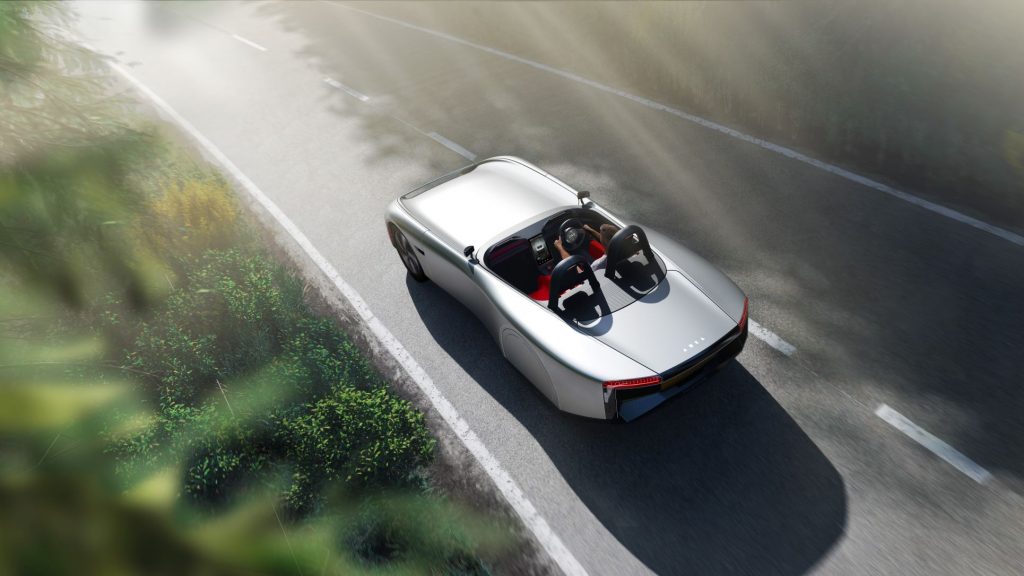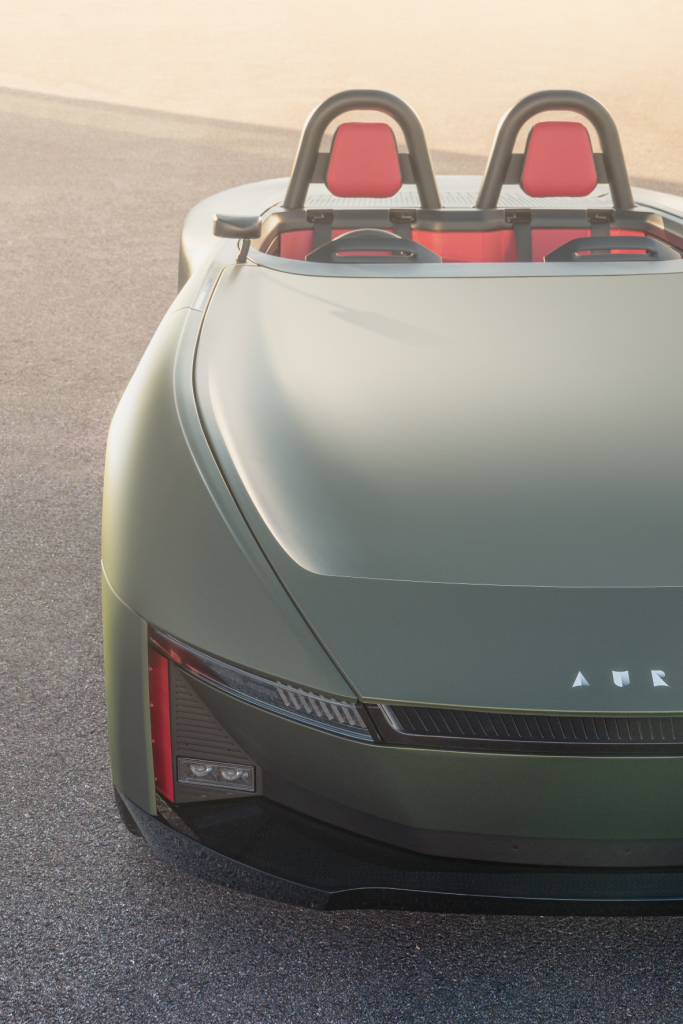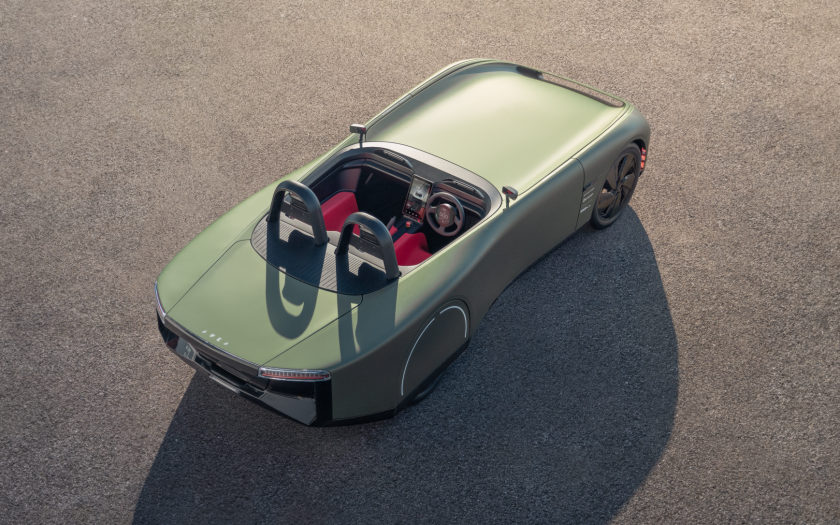LOCKDOWN DOES STRANGE THINGS to people. Take the four UK companies who have used the time to create an all-electric two-seater roofless sports car, aimed to show what the future of driver’s cars could look like.
(Warning: designer-speak ahead): Designed for nature, with sculptural surfaces and a purity of design, Aura utilises natural fibre composites, efficient electric power as well as a modern look on driver infotainment and managing real-world range readings to within 0.5 percent. The Aura concept car has been publicly unveiled at the CENEX-LCV show at Millbrook Proving Ground.

Funded by the Office for Zero Emission Vehicles (OZEV) through the Niche Vehicle Network (NVN), the Aura concept car has been designed, developed and hand built by four innovative British suppliers. Each one a leader in their field, they started together to create a low emission sports car that is efficient on power and its demands on the world around it, through its engineering, design and technology inputs, on 1 October 2020. The concept came from the understanding that as the automotive industry evolves, and the transportation needs of individuals changes, there will be a demand for a product that encompasses these requirements. The consortium of British businesses had the vision of a long-range electric vehicle (EV) that is designed for nature with sustainability at its core, resulting in Aura, unveiled less than 12 months since the project started.
All four UK-based companies responsible for the Aura concept car have been pushing the boundaries of innovation and their specialist fields to showcase the efficiencies of light weight, low drag and innovative uses of technology to solve consumer issues with running an EV. From placing the batteries and motors in optimised positions to providing rear cowling to the wheels to reduce the strain on the sportscar as it glides through the air, the team has also incorporated natural composite fibres for the bodywork that are not only lightweight but more sustainable within the manufacturing process. Aiming to show that EV adoption is more accessible than users think, its cutting-edge HMI (we’ve been advised by Conjure that HMI stands for “Human Machine Interface”) not only aims to reduce driver distraction through its driver infotainment (which includes a self-levelling driver display in the centre of the steering wheel) as well as reducing range anxiety through real-world map and charging availability.

The British companies behind Aura include, Astheimer Design, a design studio focused on delivering mobility solutions for a sustainable future (and with a name uncomfortably close to Alzheimer’s). Its vision was a pure, simple, iconic low-drag, efficient design that has been analysed at length using Computational Fluid Dynamics (CFD) testing. Maximising efficiency and the long-range of the Potenza Technology electric batteries and motors, Astheimer’s team added rear wheel covers and air curtains and large rear diffuser to reduce the vehicle’s overall wake, thus needing to use less energy and increasing Aura’s real-world range.
Using natural composite fibres from BAMD Composites and BCOMP natural woven fabric, the material specialist has added a lightweight but viable production option to manufacture the body panels, which again means that there’s less mass for the 44kWh (88kWh total) Potenza Technology batteries to power and drive the Aura sports car. BAMD’s use of natural fibres is also cleaner on the environment to produce and recycle compared to metal equivalents and has also been matched with sustainable vegan leather in the interior.
Aura is powered by a rear-wheel drive all-electric powertrain and is capable of a range of around 400 miles (640km) through two 44 kWh batteries (total 88 kWh). Thanks to innovative packaging, situating one battery at the front, and the other underneath the car’s chassis. Studied at length, the situation of the cells also improves driver dynamics and engagement for the driver due to the neutral weight distribution, with the engine bay pack located at the front of Aura and an undertray pack bolted to the chassis. It also means that the packs can easily be accessed for maintenance in the future. Potenza Technology’s powertrain team has fitted Aura with large diameter low rolling resistance wheels and tyres utilises its fifth generation of the Potenza Battery Management System, too.
Aiming to keep the focus on driving and the road ahead, Conjure has incorporated a five-inch, self-levelling, circular steering wheel-mounted display that has the key information such as range, weather and other relevant driving information. Working together with the ten-inch touchscreen in the middle of the cabin, both screens will be run by one single computing unit. Conjure has provided a virtual 3D view real-world performance and aerodynamic views that also updates the driver and allows them to update their driving styles to maximise their range based on their surroundings.
